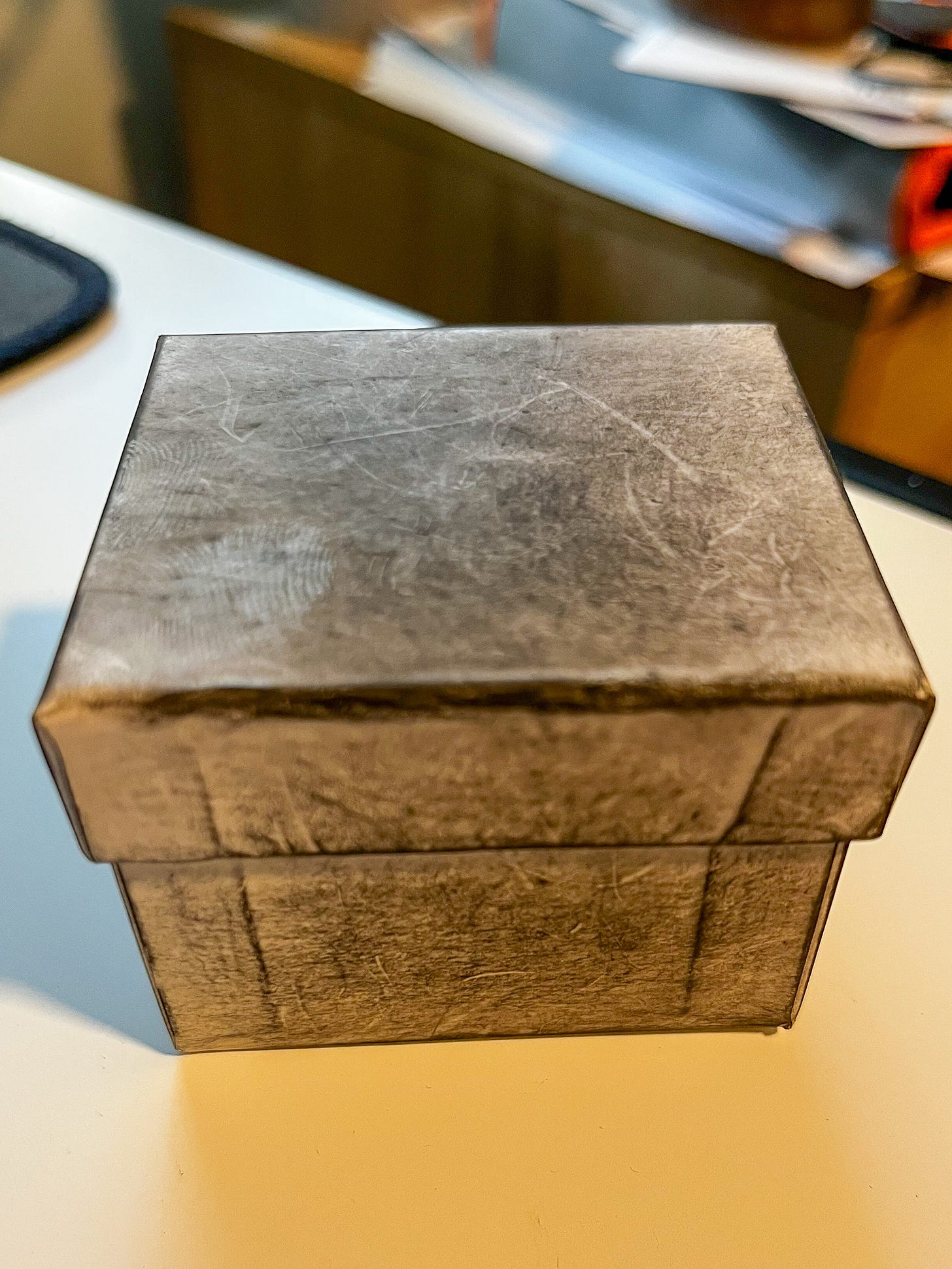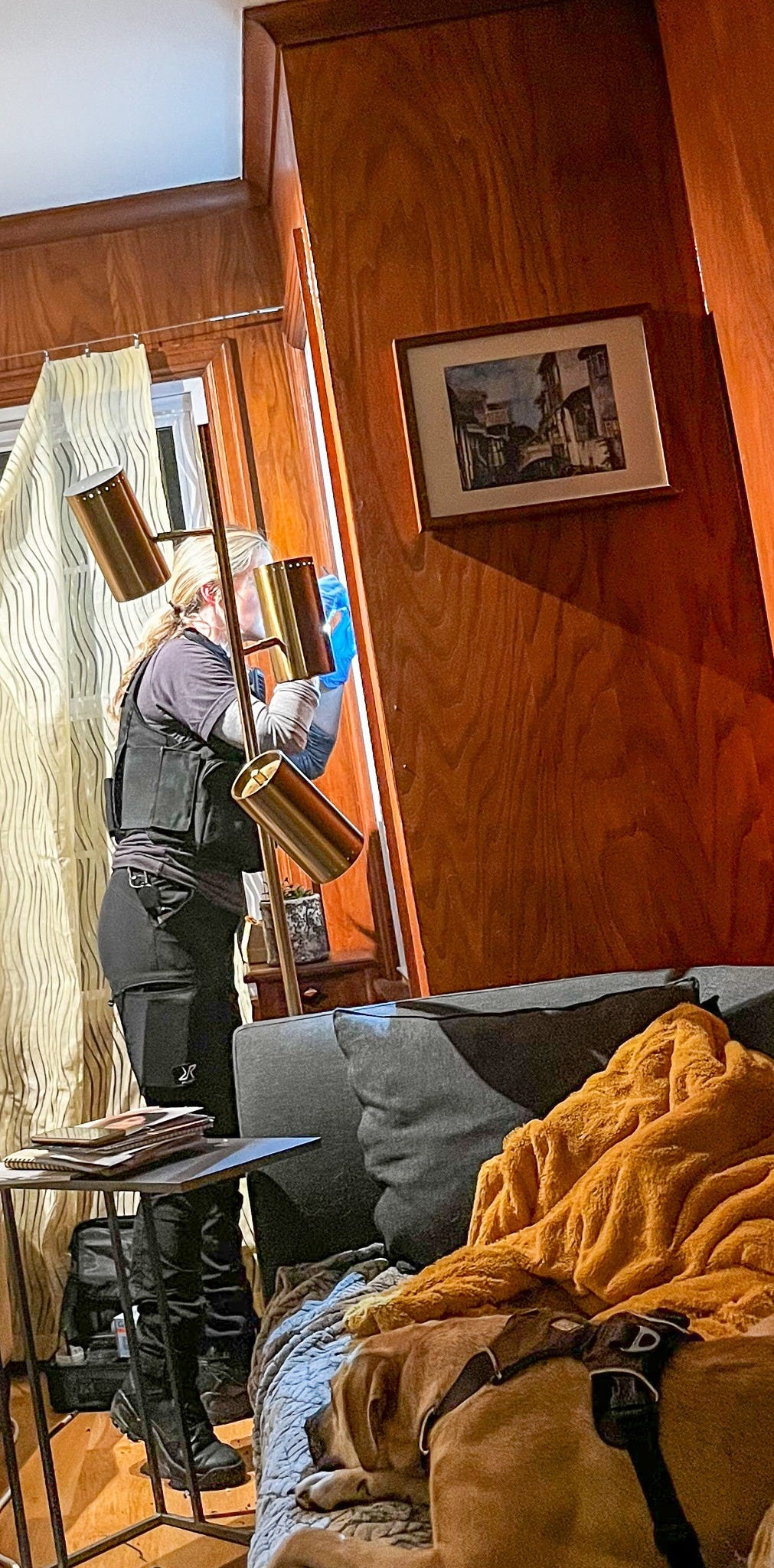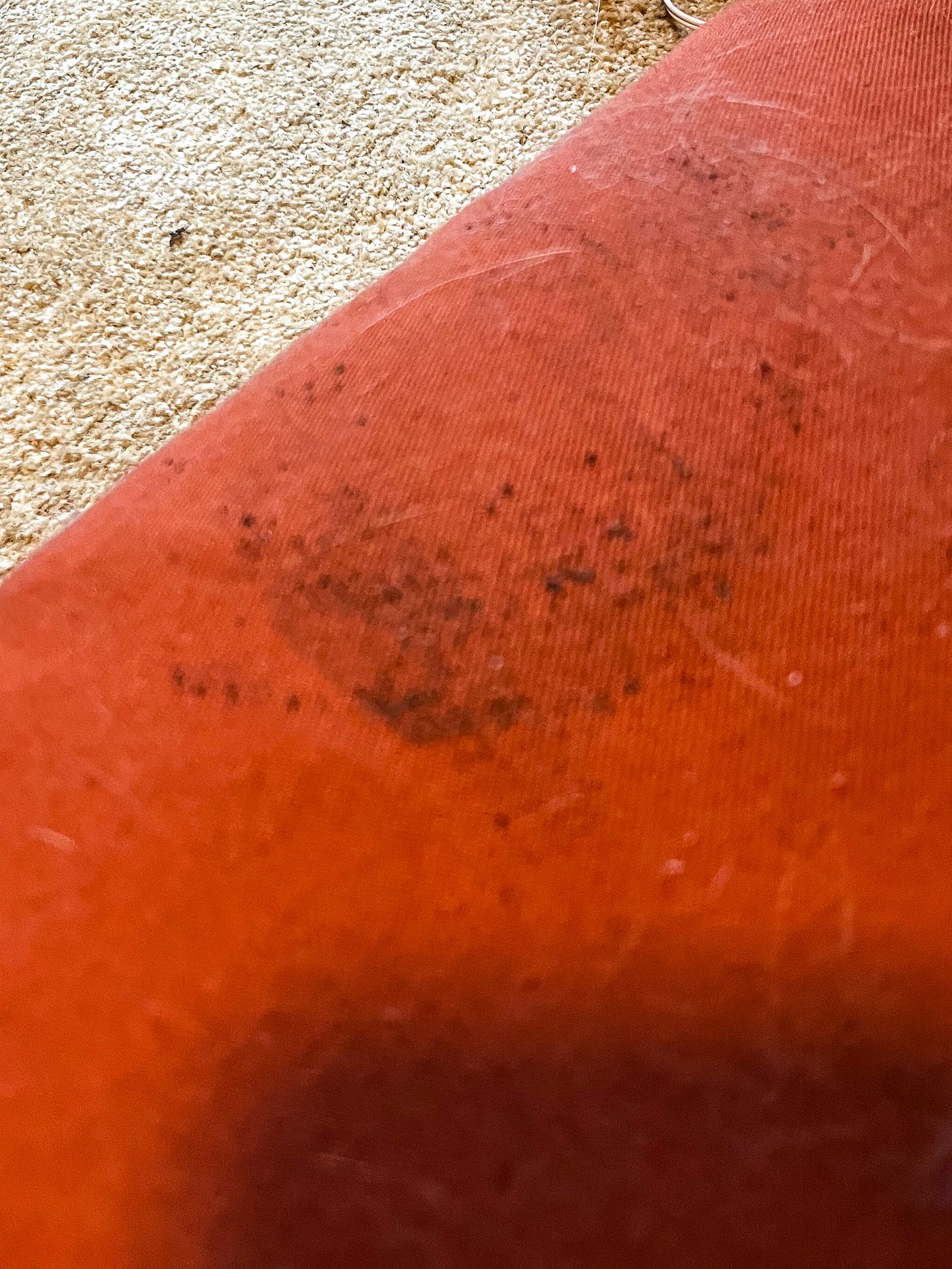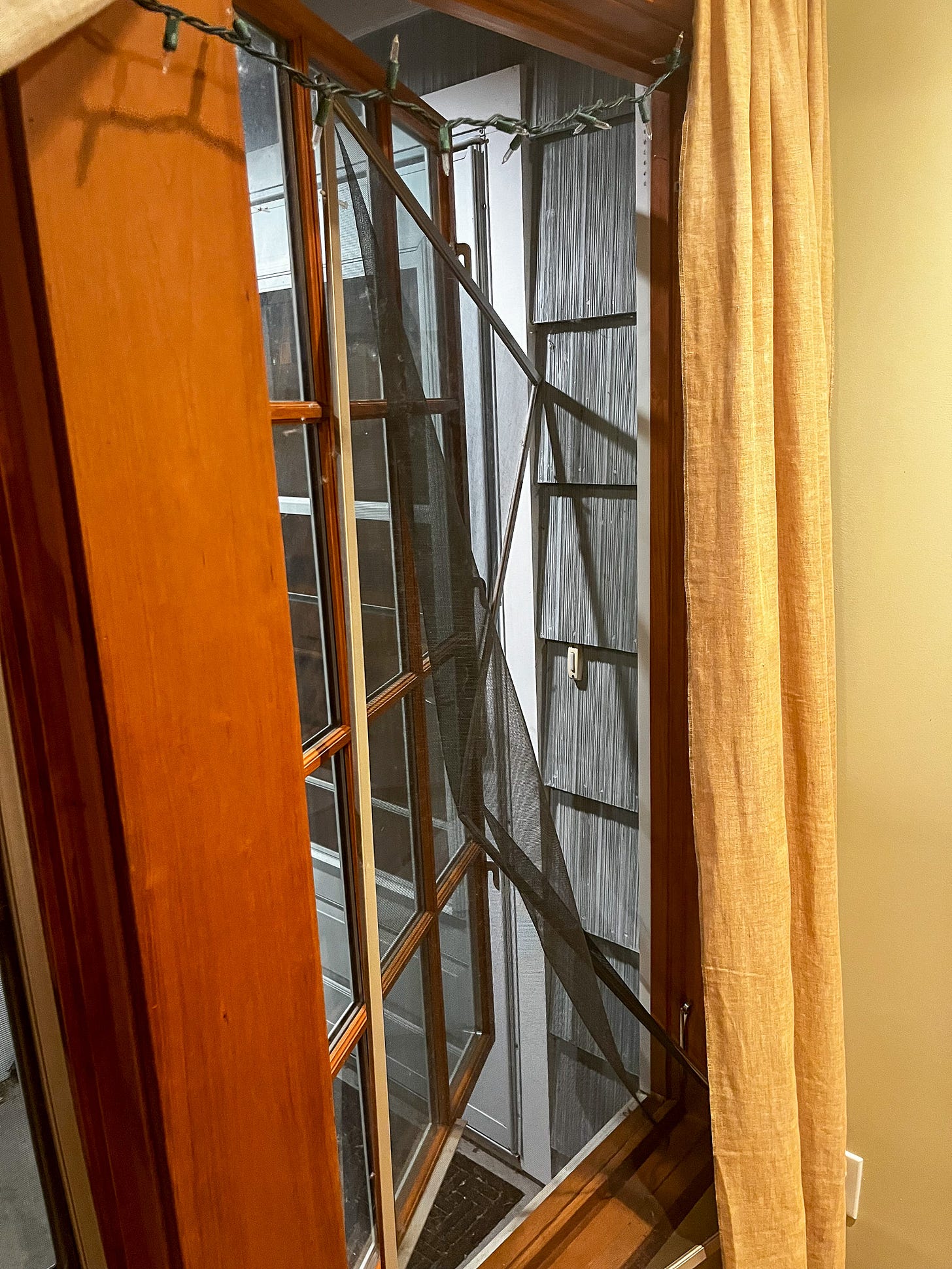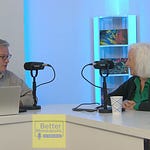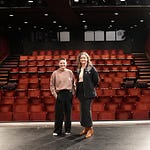In the 1983 film The Big Chill, a group of friends reunites after one of them dies by suicide. They stay at Harold’s (Kevin Kline) home in South Carolina. When Nick (William Hurt) gets picked up for running a red light and mouthing off, police threaten to press charges—until Harold and Sam (Tom Berenger), a TV star, smooth things over.
Nick, jaded and cynical, bristles at Harold’s newfound comfort with the police. Respectability, in Nick’s view, meant compromise.
The Break-In
Tuesday at about 3 a.m., someone entered our home through a ground-floor window after rifling through our cars. I found myself feeling the way Harold did in The Big Chill—oddly reassured to be on good terms with the police and my neighbors.
Our 911 call was answered immediately. An officer arrived within 10 minutes, listened carefully, took notes, and called in the Crime Lab after we showed him the knife a thief left behind. We think the intruders panicked after hearing our son on the stairs. He woke our dog Zelda, who started barking. By the time we were up, the thieves had smashed a dining room window to escape.
Two Crime Lab officers arrived soon after. They photographed evidence and lifted fingerprints. The officers were respectful and professional, even acknowledging how unsettling it is to realize someone has been in your home while you slept. Of course, our experience may have been shaped by who we are and where we live. We are white, and our middle- to lower-middle-class block is surrounded by wealthier streets. That may have influenced how we were treated. But it is also possible that some officers truly see their role as public service—and that whatever Chief O’Hara is doing is helping create a culture where compassion and professionalism are the norm.
The Reaction Chain
We shared the news with our neighborhood group chat, family, and friends. Now I’m sharing it here. This is how the perception of crime spreads—through stories that travel faster than statistics. Perception often diverges from reality. Yet I won’t withhold this from neighbors, who will likely do what we should have done: double-check locks and windows.
South Minneapolis is one of the safest areas in the city. We’ve lived in the same house for 19 years without incident. Complacency crept in.
We suspect the thieves to be young, careless, and desperate for cash. They searched for change in our cars and house, dropped their knife, spilled coins, and abandoned a cheap watch on their way out. Zelda’s bark probably saved us.
Events like this can harden thinking. People once described as suffering from “substance use disorder” quickly become “junkies” and “meth heads.” It’s natural to dehumanize those who make you feel unsafe. Resisting that reflex requires effort. If the only encounters are negative, empathy rarely survives.
Constant Vigilance
The other reflex is hypervigilance. I replaced outdoor bulbs, warned neighbors, and locked every door and window. We even discussed security systems, bars for windows, a larger dog, and—yes—keeping a gun.
But vigilance has a cost. It reshapes your outlook, turning suspicion into habit. Living in a city requires some caution, but if defensive crouch becomes the default posture, generosity and openness shrink. Some families avoid this spiral by leaving for the suburbs.
Guarding the Streets
Once victimized, proposals that before seemed unthinkable suddenly make sense. When someone is in your house at 3 a.m. with a knife, it’s hard to care where on the political spectrum your solution falls. What you want—what most neighbors want—is to feel safe.
It’s why reassurances about behavioral health calls ring hollow when your car is stolen or your garage is broken into. Alternatives to policing may have promise in theory, but lived experience pulls in another direction: more officers, more investigators, more respect for those who keep the city safe.
Minneapolis needs a coherent, unified approach to public safety. That requires a mayor and council aligned on priorities. We cannot have one faction deriding police as irredeemable while another calls for more officers. Alternatives deserve oversight as rigorous as that imposed on MPD. Leaders must be willing to drop what doesn’t work and build on what does. That flexibility is difficult even in good times—and nearly impossible when city leadership is locked in perpetual conflict.
The Path Is Short
This past weekend, hundreds marched in Portland against Trump’s plan to send in 200 National Guard troops. Governor Tina Kotek and Mayor Keith Wilson joined them.
When we last visited Portland, the city felt hollowed out. Downtown streets were dominated by visible drug use and people adrift, focused only on their next fix. While protesters turned out in the hundreds, we suspect thousands more stayed home—tired, wary, and resigned. These are the residents worn down by constant crises and disillusioned by the decline of a city that once promised so much.
Minneapolis is far from Portland, but our problems are real. Allowing people to remain unwell and scavenging on the streets is not compassion—it is neglect, and it risks provoking a heavier hand in response. We need a more thoughtful approach. A home invasion in quiet South Minneapolis may be a warning sign. When enough residents are robbed, shot, or forced to change daily routines, calls for drastic action grow louder. The path to National Guard deployments is short—and understandable.
We’re not there. But we can see how a city gets there. If Minneapolis voters want to prevent it, they need to elect a mayor and council who are aligned, pragmatic, and serious about public safety. Anything less risks the kind of decline we have already witnessed elsewhere.



